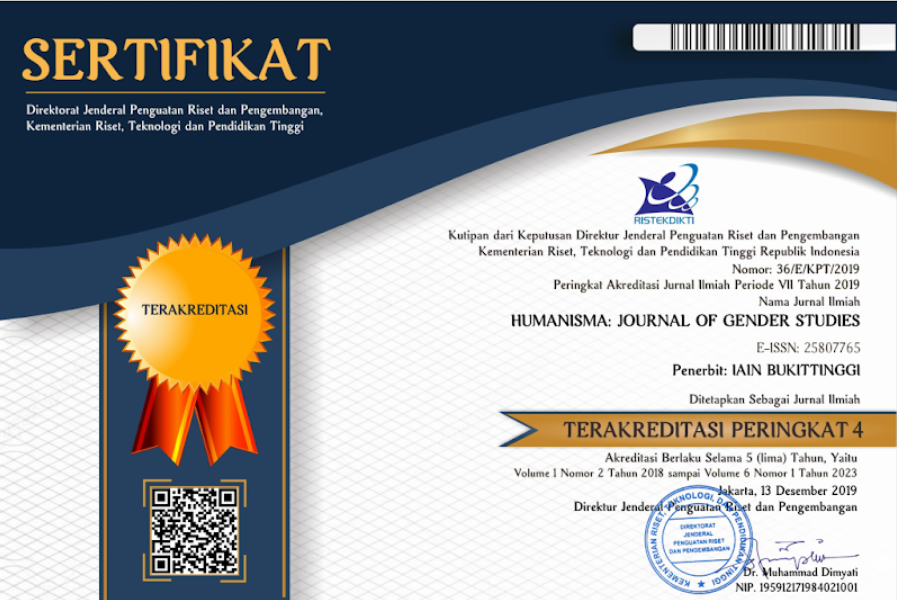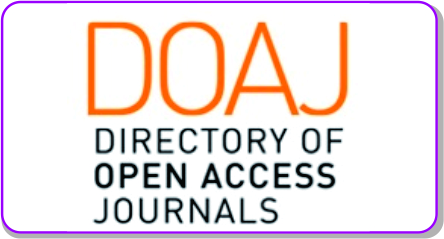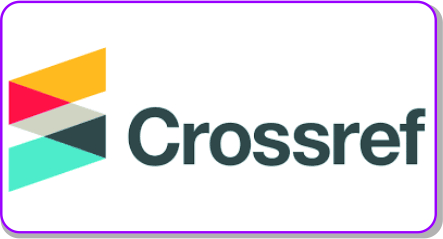KOMUNIKASI MATEMATIS DALAM PEMBELAJARAN BERDASARKAN GENDER
DOI:
https://doi.org/10.30983/jh.v1i2.254Abstract
Abstrak Kemampuan komunikasi merupakan salah satu standar kompetensi lulusan bagi siswa sekolah dasar sampai menengah sebagaimana tertuang dalam Peraturan Menteri Pendidikan Nasional Tahun 2006 tentang Standar Kompetensi Lulusan. Olehkarenanya, komunikasi harus menjadi salah satu aspek yang perlu mendapatkan perhatian. Komunikasi merupakan suatu aktivitas yang tidak mungkin lepas dari kehidupan manusia. Dengan komunikasi seseorang dapat mengekspresikan ide dan pemikirannya, saling bersosialisasi, serta menerima dan melakukan pembelajaran. Komunikasi matematis merupakan komunikasi berupa pengungkapan pikiran, gagasan dalam bentuk merefleksikan, membuat model situasi, menelaah, menginterpretasikan ide, simbol, istilah serta informasi matematika.Sebagai salah satu pelajaran yang diberikan di dunia pendidikan formal, matematika haruslah diajarkan dengan model pembelajaran yang tepat. Bukan saja tepat berdasarkan materi ajar, tetapi juga harus tepat dalam melihat perkembangan otak anak. Perkembangan stuktur otak anak laki-laki berbeda dengan anak perempuan, perbedaan ini merupakan perbedaan gender. Salah satu perbedaan gender dalam pembelajaran adalah komunikasi matematis.Berdasarkan perbedaan struktur otak tersebut maka penerapan model pembelajaran yang tepat akan memaksimalkan hasil belajar yang diperoleh masing-masing termasuk kemampuan komunikasi matematis. Keywords:komunikasi, matematis, pembelajaran, gender The ability of communication includes to the standards competency of graduates for every level education as stated in the Regulation of the Minister of National Education Year 2006. Therefore, communication pays more attention. This is an activity that can not be separated from human life. By communicating, we are able to express the ideas and thoughts, socialize, and the others. Moreover, mathematical communication means a form of thoughts expression, reflection of ideas, modeling situations, reviewing, interpreting ideas, symbols, term and mathematical information. Mathematics, as one of the subject given in formal education, must be taught with the right model in learning. It is not only appropriate based on teaching materials, but also in seeing the structure development of the student's brain. There are a difference about the development of brain structures between male and female student which is familiar with gender. Consequently, one aspect of gender differences in learning can be seen from mathematical communication. Based on this reason, the usage of precise learning model will maximize the learning outcomes as well as the ability of mathematical communication. Keywords: communication, mathematical, learning, genderReferences
DAFTAR PUSTAKA
Dewi, I. (2009). Profil Komunikasi Matematika Mahasiswa Calon Guru ditinjau dari Perbedaan Jenis Kelamin. Disertasi, tidak dipublikasikan. Program Pascasarjana Surabaya : Surabaya
Ersen Yazıcı, Erhan Ertekin. 2010. Gender Elliot and M.J. Kenney (Eds) 1996. Yearbook. Communication in Mathematics, K-12 and Beyond. USA: NCTM. 83
Fennema, Elizabeth. (2000). Gender and Mathematics: What is Known and What
Do I Wish Was Known? Paper Presented in the Fifth Annual Forum of the
Firdaus. 2013. Modul Evaluasi Pembelajaran Matematika. Pascasarjana UNP
Fredman et al. (1985). Social of Psychology. Fourth Edition. New York: Prentice Hall.
James, A. N. 2007. Gender Differences and the Teaching of Mathematics. Virginia Community College System. http://www.vccaedu.org/inquiry/inquiry-spring-2007/i-12-James.html diakses pada tanggal 23 Maret 2011.
Kaino, L.M. 1998. Undergraduates’ Attitudes And The Study Of Mathematics At The University Of Swaziland. University of Swaziland, Swaziland. http://www.google.co.id/webhp?hl=id&tab=Tw&q=Perbedaan%20gender%20dalam%20pembelajaran#q=Gender+differences+in+learning+mathematics+pdf&hl=id&biw=1024&bih=434&prmd=ivns&ei=l7OJTYzoN4HsrQfvkcnBDg&start=20&sa=N&fp=c494e1b41d517086 diakses pada tanggal 23 Maret 2011.
Lindquist, M. M. and Elliot, P.C. 1996. Communication – an Imperative for Change: A Conversation with Mary Lindquist. In P.C.
Mahmudi, Ali. Komunikasi Dalam Pembelajaran Matematika. Journal MIPMPA UNHALU: Volume 1, Februari 2009, ISSN 1412-2318.
Mitha. 2009. Inilah Perbedaan Otak Pria dan Wanita. (Online). http://www.forumkami.com/forum/cafe/26225-perbedaan-otak-priawanita.html.
Akses:2 Januari2011.
Mulyasa, E. (2005). Menjadi Guru Profesional Menciptakan Pembelajaran Kreatif dan Menyenangkan. Bandung: Remaja Rosdakarya.
Muthukrishna, Nithi. 2010. Gender Differences In Mathematics Achievement: An Exploratory Study At A Primary School In Kwazulu-Natal.
National Council of Theachers of Mathematics (2000) .Principles and standards for school mathematics. NCTM : Reston VA
Nierderle, M., and Vesterlud, L. (2010). Explaining the Gender Gap in Math Test Scores: The Role of Competition. Volume 24 number 2. Diakses pada tanggal 20 Oktober 2014,dari://web.stanford.edu/~niederle/NV.JEP.pdf
Pasiak, Taufiq. 2001. Otak Laki-laki dan Perempuan Memang Berbeda Gender dan Biologi Otak. (Online). http://groups.yahoo.com/group/partaikeadilan/message/9018. Akses: 2 januari 2011.
Polya, G. 1985. How to Solve it. An new
Aspect of Mathematical Method, Second Edition. New Jersey: Princeton University Press.
Qohar, Abd. Pengembangan Instrumen Komunikasi Matematis Untuk Siswa SMP. LSM XIX Universitas Negeri Malang. ISBN 978-979-17763-3-2.
Shadiq, Fajar (2004). Pemecahan Masalah, Penalaran dan Komunikasi, ( Yogjakarta : PPPG Matematika Yogjakarta
Sanjaya, Wina. (2010). Perencanaan dan Desain
Pembelajaran, Jakarta:Kencana
Toliver, K. (2006). Math and Communication. http://www.thefutureschannel.com/Kay_Toliver/Math_and_Communication.php. Diakses 12 Mei 2006.
Wall, T. (2013). International Gender Difference in Math and Reading Scores Persists Regardless of Gender Equalit Diakses 12 November 2014, dari http://munews.missouri.edu/newsreleases/2013/031international-gender-difference-inmath-and-reading-scores-persists-regardless-of-nations%E2%80%99-gender-equalitylevels-says-mu-psychologist/
Widyatama, R. (2006). Bias Gender dalam Iklan Televisi. Yogyakarta: Media Presindo.
Wijaya, Ariyadi (2012). pendidikan matematika realistis suatu alternative pendekatan pembelajaran matematika, yogjakarta : Graha Ilmu
Downloads
Additional Files
Submitted
Accepted
Published
Issue
Section
License
Authors who publish with this journal agree to the following terms:
- Authors retain copyright and grant the journal right of first publication with the work simultaneously licensed under a Creative Commons Attribution-ShareAlike 4.0. that allows others to share the work with an acknowledgment of the work's authorship and initial publication in this journal.
- Authors are able to enter into separate, additional contractual arrangements for the non-exclusive distribution of the journal's published version of the work (e.g., post it to an institutional repository or publish it in a book), with an acknowledgment of its initial publication in this journal.
- Authors are permitted and encouraged to post their work online (e.g., in institutional repositories or on their website) prior to and during the submission process, as it can lead to productive exchanges, as well as earlier and greater citation of published work (See The Effect of Open Access).



















